According to scientists, this is the first example of “structural paint” that does not require pigments to produce color.
Debashi Chanda struggled to find a physicist who could draw. His colleague, who currently works at the Nano Science Laboratory at the University of Central Florida, successfully created a new type of paint. They even had colorful test paint samples on hand. However, when the task required applying that paint to a surface, everyone shook their heads.
“We can’t even draw a butterfly, and we’re just talking about shapes that children can draw,” Chanda sighed.
But they persevered. The shapes and designs may appear simple, but this simplicity may have deceived many. Only through a microscope can one see that this special paint is entirely different from the paint on your walls.
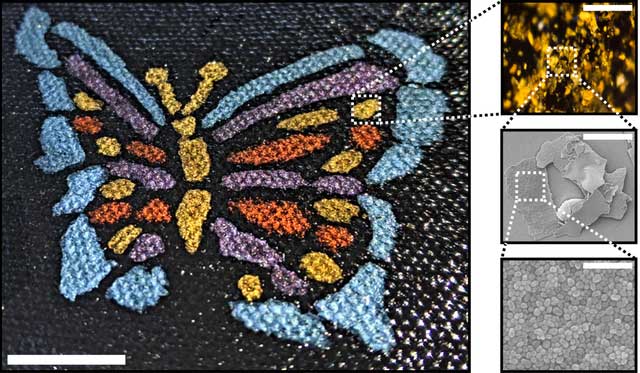
Researchers use structural paint to draw a butterfly.
Colors exist everywhere in nature, and we replicate them using color mixing techniques. However, the way nature creates colors is not simple: one only needs to glance at a butterfly’s wings or a peacock’s tail to get some understanding.
Instead of using pigments like humans do, nature creates colors through topology, or in other words, by creating special structures that reflect specific light spectra. The microscopic surfaces on peacock tails and butterfly wings diffract incoming light, producing what is known as “structural color.” This color is more durable than the paint used by artists and is not composed of pigments.
From a scientist’s perspective, the key to developing this new paint is not only to reduce environmental waste but also to help humanity live more comfortably in an increasingly hot world.
In a scientific report published in the journal Science Advances, based on the concept of structural color, Chanda’s research team announced a paint that has never existed before. They claim it is the “lightest paint in the world,” in terms of both weight and temperature. This paint contains aluminum fluff, and on this aluminum structure are even smaller aluminum nanoparticles.
With negligible weight, this paint can reduce the fuel consumption of vehicles. Additionally, this newly invented paint does not absorb heat like conventional pigment paints and contains fewer toxins than paints made from heavy metals.
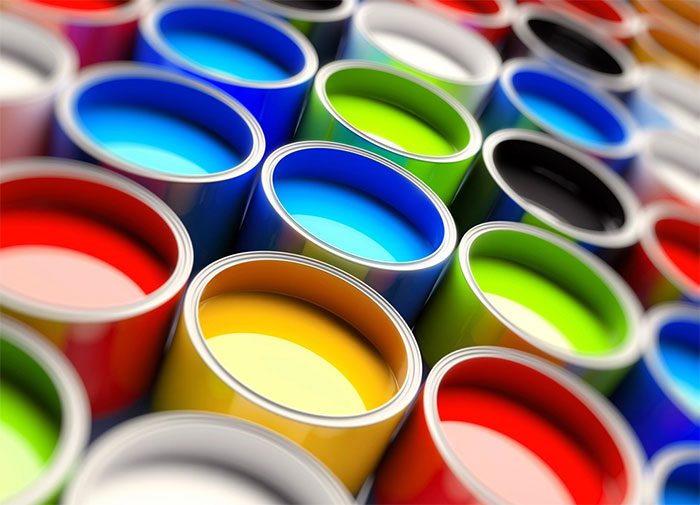
Generally, paint is not environmentally friendly.
Dayna Baumeister, co-director of the Biomimicry Center at Arizona State University, is not surprised to see that the new paint contains numerous unexplored functionalities. “This is a wonderful demonstration of the possibilities that arise when we rethink old designs by consulting nature,” she said.
While substance is more important than appearance, no one can deny the usefulness of this multi-functional coating. Humanity has used pigments for millennia, and painters have mastered the art of mixing to achieve the desired paint color. “They know exactly what to add to increase gloss; they can brighten or darken colors—they have understood paint after hundreds of years of experimentation,” Chanda noted.
A new type of paint will need to be even more innovative, reaching into the realm of physical structures rather than just aesthetics. Like many other prestigious inventions, Chanda’s breakthrough came about by chance.
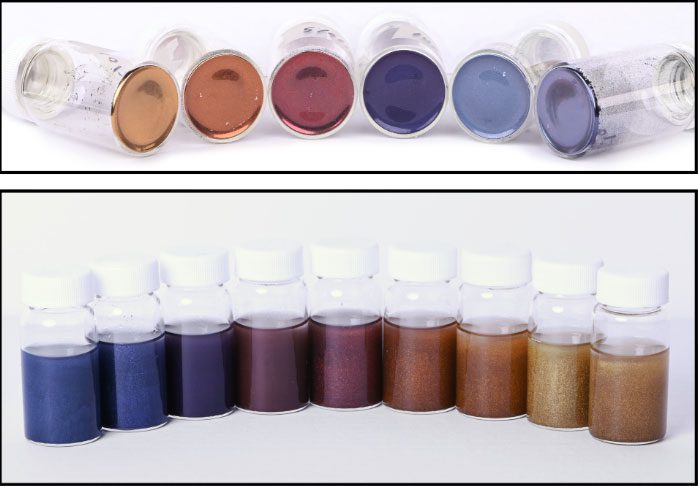
Color can be stored dry or mixed into a solution.
The research team did not intend to create a new paint but instead wanted to construct a large surface aluminum mirror with the help of a machine called “electro-spray machine.” However, after each use of the machine, they discovered special “nano islands,” tiny clusters of aluminum atoms small enough to be microscopic, yet still large enough to prevent the mirror from being uniform. These nano islands exist all over the mirror’s surface “in a very annoying way,” according to Chanda.
Then the moment of “eureka” arrived: this small flaw turned out to be useful in another way. When white light strikes the nano aluminum particles, the electrons in the metal become excited—either oscillating or resonating. When the dimensions are down to the nanoscale, atoms react in very unusual ways. Depending on the size of the aluminum nanoparticles, the electrons within them will oscillate at specific light wavelengths. The white light shining here is reflected with a particular spectrum: the coating of aluminum particles on the reflective surface has caused the surface to produce color.
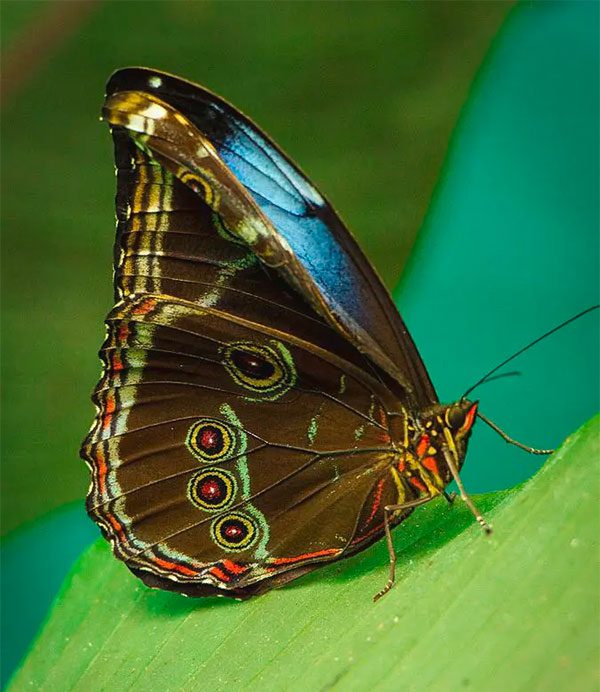
Color on butterfly wings is not produced by pigments.
The size of these nano islands determines what color appears. “Just by changing the dimensions, you can create any color,” Chanda said. Unlike pigments, which require a specific molecule foundation for each color—such as cobalt or another substance—the foundational molecule for this color creation process is always aluminum, only cut into different sizes and oscillating at different light wavelengths.
This mechanism allows scientists to create a new type of paint. The team started with a thin double-sided mirror and applied a layer of buffer material on each side to enhance the color effect. Next, they placed nano metal islands on both sides, and to make this material compatible with adhesives, they dipped the material sheets in fine color pigments. Finally, once there were enough colors to create a rainbow, the research team began painting.
Since structural color can cover a large area with just a thin and ultra-light layer of material, Chanda believes this new paint could lead to breakthroughs in the aviation industry. A Boeing 747 typically requires an average of 500 kilograms of paint to cover all surfaces, but with the new paint, aircraft manufacturers only need 1.3 kilograms to achieve the same effect. Reducing weight means saving fuel.
Perry Flint, spokesperson for the International Air Transport Association, agrees with this assessment. “With fuel costs accounting for a significant portion of operating costs [approximately 30% in 2022], airlines are always looking for ways to improve fuel efficiency,” Flint said, also providing a very illustrative example.
When American Airlines eliminated 30 kilograms of pilot instruction materials from each flight, they saved up to 1.2 million USD in operating costs annually. In 2021, American Airlines applied this new paint to its 737 aircraft, resulting in a savings of 1.1 million liters of fuel.
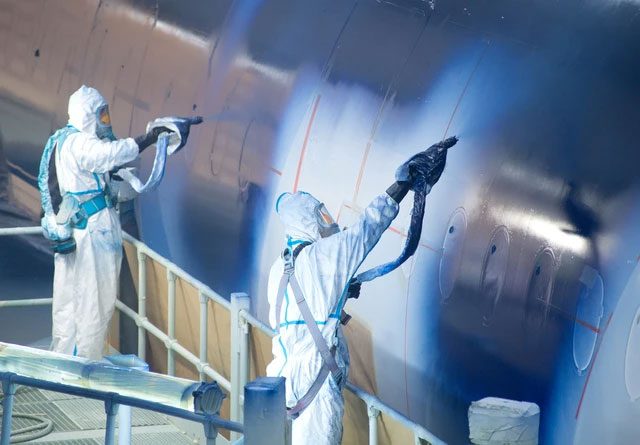
A lighter coating means airplanes consume less fuel.
Experts are considering using this new paint for pavement, which could help reduce heat accumulation in large cities. It could cool vehicles, roads, and even rooftops. A cooling system for infrastructure could help humanity save energy typically used for cooling.
However, mass production of this new paint is not an overnight task. According to Chanda, “the laboratory is not a factory.” Baumeister believes initial applications will be small-scale: possibly in electronics or in temperature-sensitive manufacturing processes.
Baumeister is hopeful for a bright future, where biologically-based inventions can be applied on a large scale. “The future of humanity depends on how well we learn to align with nature,” she remarked.


















































